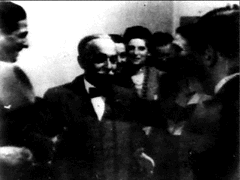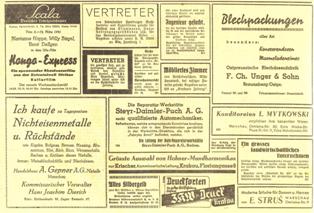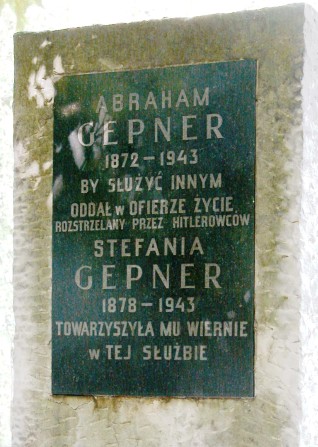Holocaust Education & Archive Research Team |
Ghettos
Introduction to the Ghettos of the Holocaust
Jewish Ghettos The Judenrat Judenrat Leaders Prominent Jews
| ||
Abraham Gepner
Abraham Gepner was born in Warsaw in 1872; before the Second World War he was a businessman, a member of the Warsaw City Council and a leading figure in Jewish affairs and charitable activities. He was also Chairman of the Union of Jewish Merchants. When the Germans invaded Poland in September 1939, Gepner was 67 years old. On the occupation of Warsaw, Gepner and Samuel Zygelbojm were the two Jews among 12 leading personalities taken hostage. Abraham Gepner served on the Warsaw Ghetto Judenrat from its inception and was close to the Judenrat Chairman, Adam Czerniakow. In November 1940, Gepner became head of the Supply Department, which provided food and other essential items.
Although Gepner was unable to prevent hunger and widespread death through starvation, the ghetto’s inhabitants trusted him and his department worked as efficiently as possible.
Gepner was also involved in assistance and welfare in the ghetto, especially for children and orphans.
According to Adam Czerniakow’s diary entry for 17 February 1942, Gepner was talking with some staffers:
“Do you know how to count?” “Yes we do.” “Then don’t count on me.”
Clearly Gepner understood that rank and former standing would not help in the times ahead, and how right he was.
On 21July 1942, members of the Sicherheitspolizei arrested those present in Czerniakow’s office at the Judenrat, as well as Senior Councillors. At the same time the senior officials of the Provisioning Authority, with Gepner heading the list, were also seized.
Czerniakow requested the release of Gepner from Auerswald and Höfle. On 22 July, Gepner was released and was back in the ghetto by 3:45pm. He rejected an offer from Polish friends to shelter him on the “Aryan” side of Warsaw, choosing instead to remain in the ghetto.
Gepner supported the ghetto underground and secret pioneer movements. When the Warsaw Ghetto Uprising began on 19 April 1943, he initially refused to hide in a bunker; however, he eventually relented and sought refuge in a bunker on Franciszkanska Street.
On 3 May 1943 the Germans captured the bunker and pulled Gepner and others from their hideout and shot them.
Sources:
Trunk, Isaiah - Judenrat. The Jewish Councils in Eastern Europe Under Nazi Occupation - The Macmillan Company - New York, 1972. Adam Czerniakow – The Diary of Adam Czerniakow – Yad Vashem 1968 – Elephant Paperbacks Yad Vashem – Resource Centre
Copyright: SJ H.E.A.R.T 2007
|


